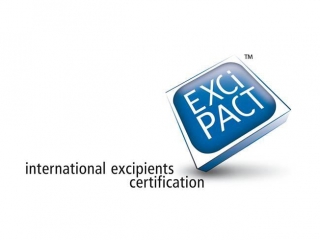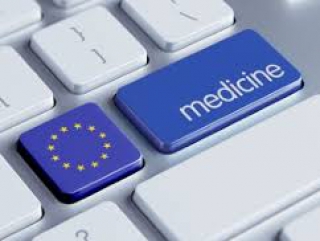Editorial

Welcome, readers to our spring edition!
Reflecting on what has happened during the past two months, again I am drawn to the subject of regulations, and not just those that impact directly or indirectly on pharmaceutical excipients. Surprisingly, I’m talking about those areas where we wish there might be some regulatory processes in place to better protect the intellectual property of particularly, novel excipients. Through our Quality & Regulatory Affairs Committee (QRAC), IPEC Europe is again looking at whether the time is right to encourage setting up a European master file system for excipients. This edition reports on the groundwork that a task force is doing to evaluate if the political environment has changed, whether legislation of this type could encourage greater use of novel excipients and - in turn - drive the introduction of innovative products in Europe for the benefit of patients. Regulations can be good news and we look forward to reporting of our progress on this initiative. As ever, your thoughts and comments on how we approach this would be welcomed by the task team.
Continuing on this theme, the highlights of the first Board meeting of 2018 touch upon the need for us to strengthen our ‘radar’ to ensure we capture all new and revised guidance touching excipients. Our members will be aware that recent developments on Titanium Dioxide E171 by the food safety agency EFSA could have major consequences for drug products too, similar to the situation we reported for Iron Oxide E172 in September 2017. While I don’t want to go into the details of those issues here, I want to highlight the growing need that we don’t only need to monitor regulations related to the healthcare sector but also related fields such as foods, chemicals and cosmetics. We need to be vigilant so we, representing suppliers and users in excipient supply chain, can raise any issues with medicines legislators as early as possible.
And finally, I’d like to acknowledge contributors to the two successful events we’ve been involved with this month. Our webinar on stability testing for excipients was very well received and IPEC Europe had a big presence at the second Making Pharmaceuticals venture in 2018 at Coventry in the UK, hosting part of the speaker programme and through our exhibition stand. Reaching out to the wider world via virtual and tradition media, helps to share our vision for excipients and what we do. So, Christian Becker, Liz Meehan, Iain Moore and Tanja Natterer, thank you so much for your involvement and representing IPEC Europe so well.
Until the next time, enjoy this edition.
Frithjof Holtz
IPEC Europe chair
Novel excipients - why a master file system could remove regulatory obstacles

In the last 20 years, the number of novel excipients that have successfully been brought to market has been vanishingly low. While there is no shortage of high-quality R&D work on new excipients that could improve the quality, safety and ease of manufacture for medicinal products, regulatory challenges make it hard for pharmaceutical manufacturers to use them in their products.
The main reason for this is that novel excipients – by their very nature – have not been through any prior regulatory assessment for pharmaceutical use, so drug developers cannot reference pharmacopoeias or other ingredient compendia, or earlier drug approvals. In Europe there is still no simple way to demonstrate the safety and efficacy of a new excipient, other than to win approval of its use as part of a medicinal product via the usual marketing authorisation application (MAA) procedure.
What is lacking is a regulatory mechanism for independent review and qualification of new excipients. For many years, IPEC Europe has advocated the need for a master file system in the EU that can be used for excipients, but with Europe increasingly out of step with the rest of the world on this issue the organization believes it is time to raise the issue once again.
“All of the IPEC Federation regions have a master file system open to excipients – including US, Japan, China and India – except for Europe,” notes Kate Denton (pictured), who represents Albumedix Limited on IPEC Europe’s Quality and Regulatory Affairs Committee.
Given that many other regions including Australia, New Zealand, Canada and Korea also have excipient master file (EMF) systems, the EU is increasingly looking like an outlier on this important issue - and as a result - "the needs of both developers and users of novel excipients are not met in Europe compared to other global regions,” she adds. The situation means new and improved treatments are reaching patients in other countries that are not penetrating the EU market.
In jurisdictions that operate EMFs, a pharmaceutical manufacturer has two ways to apply to use a novel excipient in a medicinal product. It can file the supporting data as part of a marketing application or alternatively reference a master file which the excipient supplier has already lodged with the regulatory agency.
Most excipients are used in pharmaceutical products in Europe on the strength of a Certificate of Suitability (CEP) that can be submitted to the European Directorate on the Quality of Medicines and Healthcare (EDQM) in order to demonstrate that the excipient meets the monograph requirements laid out in the European Pharmacopoeia (Ph. Eur.). However this approach is not possible for a novel excipient.
“IPEC Europe recognises that an EMF would not necessarily be of value for compendial excipients for which a CEP can be obtained and therefore it envisages its use mainly by novel excipient manufacturers,” says Denton.
She would like to see a system where the EMF contains a closed portion that could be accessed only by the regulator, with an open part provided to the excipient user, namely the marketing authorization holder (MAH), similar to the system that is already used for active pharmaceutical ingredients (API), i.e. active substance master files (ASMFs). IPEC Europe believes that, as for APIs, such an approach would allow the MAH access to all the information needed to take full responsibility for the excipient’s use in a drug product, whilst also helping the supplier protect confidential information about its product. A master file system is used successfully in this way in all other major world regions as discussed above.
“Given that data requirements for active substances and novel excipients are equivalent, and that the European legislation specifies that information in relation to a novel excipient must be supplied according to the active substance format, IPEC Europe believes that novel excipients should be treated the same in terms of their assessment procedure and that submission via a master file procedure should be possible,” according to Denton.
“The rationale for allowing manufacturers of active substances significant advantages that are not open to novel excipient manufacturers is unclear.”
An EMF system would also allow the regulator to have all the complex information on the excipient in one centralised location where it can be reviewed in conjunction with drug licence applications. That would reduce the need for duplicative assessments of the same information if the excipient is cited in more than one marketing application.
IPEC Europe also believes that as it stands EU reviewers may not have access to the same level of information on the excipient as their counterparts in other EMF-using countries. That is because excipient manufacturers seeking to protect their intellectual property may not be able to hand over confidential details to the MAH. This could have a negative impact on the EU assessors’ ability to ensure the safety and quality of the finished pharmaceutical product.
“Implementing an EMF system in Europe by extending the use of the ASMF to novel excipients would benefit a large proportion of the pharmaceutical industry—excipient manufacturers and users alike—by reducing the barrier to innovation in this area and bringing Europe in line with other global markets,” concludes Denton.
“This would encourage the development of improved drug products thereby increasing EU citizens’ access to better safer medicines.”
IPEC Europe is drawing up a position paper to reflect that viewpoint. If you are an IPEC Europe meber and would like to learn more, or to get involved in the EMF project, please contact the Secretariat.
Report on first 2018 IPEC Europe Board meeting

by Adrian Bone - Senior Advisor to IPEC Europe
In March, The IPEC Europe Board held its first face-to-face meeting of 2017 and here are some highlights. After the presentation made at the Annual General Meeting in Bordeaux, now is when the real work starts and so time was spent reviewing the objectives agreed there, that they are assigned with timelines and (Board) owners, and are adequately funded. As a reminder, you can see in the infographic below our main goals for this year defining the activities required to keep IPEC Europe on track with the vison outlined in our agenda Agenda 2020. An easy reminder of what we have to do this year!
It is good to note particularly that in the areas of communication and knowledge sharing, great steps have already been taken. The website redesign is underway with a 'go live' date aimed at Q2. External events feature strongly again in the IPEC Europe, extending our outreach in a bid to ‘spread the word’ on excipients both virtually through our webinar programme and be present at several events including Making Pharmaceuticals (Brussels (March) / Coventry (April)), ExcipientFest Asia (Beijing, July) and the APV/IPEC Europe Conference (Cologne, September). We hope very much that these efforts support member recruitment, too.
Another key focus area where initiatives are ongoing is stakeholder collaboration. The collaboration with EFCG in 2017 delivered out IPEC infographic (link) and will continue to develop key messages on the importance of the upstream part of the medicines supply chain and the value it deliver. Already progressing well, following its announcement earlier this year, is the partnership with PDA to publish a ‘how to …’ guide on risk assessment for appropriate excipient GMP. And while in its early stages, our relationship with APIC will hopefully produce some good work products.
Regulation and Harmonisation were represented as the Board reviewed the recent proposals the structures of the Pharmacopoeial Review & Harmonisation and Quality & Regulatory Affairs Committees. Both now have a two-tier structure in place, with a core team and an observer community, and seem to be functioning satisfactory but this way of working will continue to be monitored. One of the biggest challenges for each committee is to enhance their monitoring capabilities to be sure all appropriate new and revised information are evaluated to best represent the inputs of IPEC Europe members. The revitalised PR&HC is picking up core team members but the Chair position is still vacant and needs to be addressed. PR&HC and QRAC did meet in April, reports of which will be included in a future edition of Excipients Insight.
Finally, the Election of Officers following the AGM took place as is required by our Articles of Association.
IPEC Federation update
IPEC Europe Board agendas routinely include an update on the work plan of the IPEC Federation which on this occasion was delivered by its new vice President, Frank Milek, who is now IPEC Europe’s representative on the Federation Board. The objectives presented by the incoming President, Priscilla Zawislak at the IPEC Europe AGM in Bordeaux, were discussed in the context of IPED Europe’s role in them.
If you have any questions or would like to know more about IPEC Europe Board activities, please do not hesitate to contact IPEC Europe at info@ipec-europe.org.
Elemental impurities database: a tool for ICH Q3D risk assessment

by Andrew Teasdale, Chair AstraZeneca Impurities Advisory Group (IAG) 11
ICH Q3D is predicated on the need to conduct an holistic risk assessment of all potential sources of elemental impurities (EIs). Prime among these, at least in terms of perceived risk, are excipients especially those derived from mineral sources. The guideline lays out basic principles for a review including that this should take a risk-based approach, one that is evidence based, pointing to the potential to utilise data, including published data to assess the risk.
At the onset knowledge was limited, particularly so in terms of data for excipients. In 2015 the results of a study jointly performed by FDA and IPEC Americas was performed. Data from some 200 excipient samples was published. This concluded that the overall risk associated with excipients was relatively low, especially when typical proportions in formulated drug products were taken into account. This important insight led a consortium of pharmaceutical companies to establish a database to collate the results of analytical studies they had performed. This database currently includes the results of over 25000 elemental determinations for over 200 different excipients and represents the largest known, and still rapidly expanding, collection of data of this type.
A soon-to-be-published analysis of the database (which will appear in J Pharm Sci) examined a series of aspects including data coverage as well as impurity levels and variability (across supplier/grade etc.). Comparison of the excipients studied with those used in drug products showed a very high correlation, there being multiple analytical studies for many of the excipients used by drug product manufacturers. This allowed both excipient supplier and batch-to-batch variability to be examined. The results are compelling. Critically the data reaffirm the findings of the earlier smaller FDA-IPEC studies providing compelling evidence to support the original conclusion that elemental impurity levels in excipients, including mined excipients are generally low and that when used in typical proportions in formulated drug products are unlikely to pose a significant patient safety risk.
The database is now in active use and provides real evidence in support of holistic ICH Q3D risk assessments.
Webinar on stability testing of excipients

IPEC Europe held its first webinar of the year on 26 April. The topic was pharmaceutical excipient stability testing and the information that may be disclosed to users and regulators. Ms Tanja Natterer, Head of Quality Control at Aug. Hedinger GmbH, gave a very insightful and informative presentation that triggered an interesting Q&A session with the participants We plan to organise soon other webinars such as this one, so keep an eye on ipec-europe.org...!
How excipient certification can reduce audit burden for suppliers and users

EXCiPACT senior advisor Tony Scott has authored an article in Industrial Pharmacy (April 2018 edition; issue 57) explaining how the EXCiPACT certification scheme can reduce the “unsustainable” audit burden for both suppliers and users of pharmaceutical excipients.
Pharmaceutical manufacturers are legally required to assess the suitability of their excipient supplier’s GMP to satisfy the outcome of the formalised risk assessment. As supplier questionnaires do not usually provide evidence of GMP compliance, physical audits are the only answer – third-party auditing via “demonstrably credible” schemes such as EXCiPACT, has become acceptable to regulators as a means of alleviating the audit burden.
“By the end of 2017, an ever-growing global list of pharmaceutical excipient suppliers have been certified for GMP and/or GDP by EXCiPACT registered Certification Bodies and published on www.excipact.org,” writes Scott.
“This list is being regularly used by MAHs as a reliable source during their supplier qualification process as it offers direct access to audit reports and certificates and has taken the place of many individual audits.”
IPEC Europe calendar

| Group |
Q2 2018 |
| IPEC Europe Board |
14 June |
| GDP Committee |
24-25 April, Manchester |
| Pharmacopoeial Review & Harmonisation |
April (TBC) |
| Quality/Regulatory Affairs |
19 April |
|
EMA opens consultation on GMP non-compliance statement

The European Medicines Agency (EMA) is launching a public consultation concerning the EU template for GMP non-compliance statement.
It says the purpose of this consultation is to "collect relevant information from stakeholders to help the GMP/GDP Inspectors Working Group to develop an effective and harmonised risk-based approach for dealing with the supply of critical medicines in case of serious GMP non-compliance amending the Compilation of Community Procedures on Inspections and Exchange of Information (CoCP)." The document is available by clicking here.
Comments on the proposed updated template (pages 3 and 4 of the document) should be submitted no later than 15 May 2018 by email to ADM-GMDP@ema.europa.eu.
EMA, EU27 share out MHRA's rapporteur duties

The EU27 member states and the European Medicines Agency (EMA) have reallocated all the centrally authorised medicinal products for which the UK Medicines and Healthcare products Regulatory Agency (MHRA) and Veterinary Medicines Directorate (VMD) are currently rapporteur or co-rapporteur appointed by the scientific committees to coordinate the evaluation of a medicine.
The transfer affects more than 370 products that are now being handled by EU27 member states plus Iceland and Norway. The new EMA (co)-rapporteurships will be communicated to the relevant Marketing Authorisation Holders (MAHs) before the end of April but they will only take full responsibility for the re-allocated products as of 30 March, 2019, when the UK withdraws from the EU and becomes a third country
Ph. Eur. updates infrared absorption spectrophotometry chapter

The European Pharmacopoeial Commission (Ph. Eur.) has adopted a new version of one of its major general methods, which has undergone extensive revision.
The chapter on infrared absorption spectrophotometry (2.2.24) is one of the original cornerstones of pharmacopoeial testing, referenced in many general texts and more than 1200 individual monographs, according to a European Directorate for the Quality of Medicines and Healthcare (EDQM) press release.
The chapter has been completely rewritten and its structure updated to include:
- the removal of monochromator instruments as they are now obsolete;
- an extended description of Fourier-transform spectrometers (FT-IR) using attenuated total reflection (ATR) and related criteria for the control of equipment performance;
- a new "principle" section, with distinction between near-, mid- and far-infrared;
- new sections on applications and limitations;
- a reduction from 7 to 4 band positions for verification of the wavenumber scale following the removal of monochromator instruments, and addition of slightly shifted band positions for ATR FT-IR instruments;
- guidance on the use of stored spectra and internal libraries;
- a description of procedures for the comparison of spectra.
Among the highlights of the revisions, says EDQM, is that the new band positions – and the associated acceptable tolerances – proposed for the verification of the wavenumber scale have been established based on experimental data gathered during two series of round-robin tests by different laboratories using different instruments.
New USP Chapter <922> Water Activity

The US Pharmacopeia has proposed a new General Chapter <922> Water Activity, for suppliers and manufactures of excipients, drug substances, drug products, veterinary products, regulatory agencies, and manufacturers of water activity instruments.
USP’s Physical Analysis Expert Committee says the new chapter is intended to provide guidance for performing measurements of water activity (Aw)". Furthermore, the chapter "will specify methods for qualification of instruments, calibration of instruments, methods for performing water activity measurements, and reporting of results".
It notes that water activity (Aw) is the effective concentration of pure water in a raw material or product. When water is strongly bound to a solute or surface, it does not contribute to the Aw. It has been established that bacterial growth is correlated with water activity, not water content. Substances (e.g. food) obtaining higher Aw values tend to support more microorganisms.
The deadline for input for preparing the draft is 30 April 2018. The final proposal is estimated to be published in Pharmacopeial Forum (PF) 44(6) in November 2018. However, in consultation with our IPEC-Americas colleagues, this outline of a proposed new chapter likely reflects current practices for water activities in pharmaceutical companies.
Photo by zhang kaiyv on Unsplash
Recommended reading

CoAs help secure the supply chain
Pharmaceutical Technology
Certificates of analysis can be used to monitor the reliability of products and their suppliers, says Susan Schniepp, distinguished fellow at Regulatory Compliance Associates.
Brexit and the potential impact on patients access to medicines and medical devices
EFPIA
The Brexit clock is still ticking, and we are now only a year from the UK becoming a third country. The agreement on the transition period and guidelines adopted by the European Council on Friday are critical, setting out the political will to ‘initiate work towards a balanced, ambitious and wide-ranging free trade agreement’.
Consultants urge pharma to take action now as clock ticks on Brexit
In-PharmaTechnologist.com
With less than a year until the full implications of Brexit set in, Parexel consultants urge the industry to not wait – assess potential risks, such as to the clinical supply chain, and take actions to mitigate them.
Colorcon follows through on tablet-marking deal with APDN
SecuringIndustry.com
Colorcon has teamed up with Applied DNA Sciences to use its DNA tags in pharmaceutical oral dosage formulations, firming up an option it took on the technology last year.
US FDA slams French lab for compromising supply chain accountability
In-PharmaTechnologist.com
Contract analysis firm Quali-Controle & Quali-Controle has received a US FDA warning after violating GMP in the testing of finished pharmaceuticals.
Events Calendar

Here is a round-up of forthcoming events of interest to suppliers and users of excipients. Please let the IPEC Europe Secretariat know if we've missed one.
ExcipientFest Asia
Beijing, China - 19-20 July, 2018
More information here.
APV/IPEC Europe Excipient Conference 2018
Cologne, Germany - 19-19 September, 2018
More information here.
CPhI Worldwide
Madrid, Spain - 9-11 October, 2018
More information here.
|